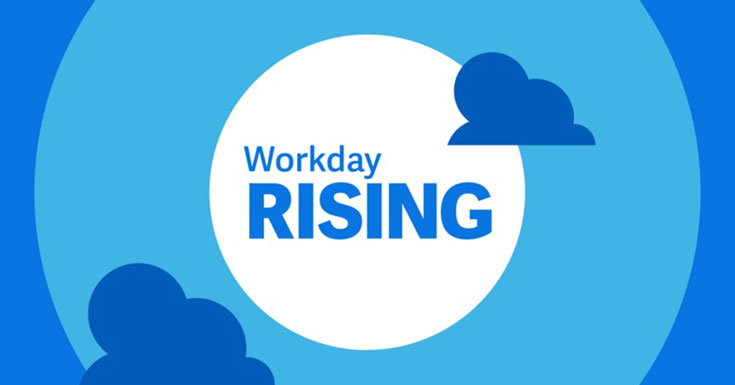Workday Rising 2022
Senior Analyst

This year saw the return of the in-person Workday Rising event held in Orlando, Florida. Many new Workday innovations were revealed during the event, with arguably none more significant than Workday’s announcement of its intent to expand its partner ecosystem by leveraging Workday Extend enhancements to create, share, and productize Workday apps. The expansion of the partner program, announced by Sam Alkharrat, Chief Partner Officer, will launch in 2023 and will include three tracks built around themes of go-to-market, innovation, and service partners. The goal is to foster a more collaborative relationship with partners to accelerate application development, giving customers new options to extend their platform capabilities. While in the commercial sector it is easy to see how this will excite both customers and partners, it will be interesting to follow the use of this functionality among higher education customers. Sharing applications may appeal to schools that work collaboratively to improve student success at their institutions.
Workday Extend Broad Rollout
The new capabilities of Workday Extend present exciting possibilities for Workday higher education customers and implementation partners. While Extend has been generally available since 2020, new features including no-code/low-code application builders coupled with the Workday Graph API will allow users to access Workday APIs, providing a powerful toolset to accelerate application development to extend Workday functionality. The WD Orchestrate application builder extends the Workday processes native to the core suite and allows full interactivity with external applications, extending the Workday data model.
Workday CEO Aneel Bhusri noted that the timing of the release was planned to ensure that the rollout of Extend would work as designed at scale. He also emphasized that the experience at PeopleSoft with PeopleTools, where the product allowed for customizations, but was effectively a dead end was something he did not want to repeat. That strategy led to complex operational and long-term consequences for customers. Bhusri feels the Workday Extend solution is now ready for significant growth. The pandemic provided an opportunity to test the platform at scale, with many companies needing to roll out vaccine-related applications. Communication around the roadmap will be critical to avoid duplication of effort among partners and customers so that valuable time and resources are not spent on functionality that was already planned for.
Technical Advances
The Technology Strategy and Vision keynote focused on the continued expansion of Machine Learning (ML) through the platform, with new capabilities being added throughout HCM, Finance, and UX over the next year. These include
- the ability to detect pay anomalies and enhanced gig match analysis in HCM (gig functionality was inherited from the acquired VNDLY product)
- supplier invoice automation, contract search, and invoice and PO matching in Finance
- intelligent answers and Intelligent Auto Suggest in the UX
Also worth mentioning are the enhancements to Workday Everywhere integrations, with the new ability to access Workday from Microsoft Teams or Slack within those applications. This reflects the new Workday philosophy of making engagement with the platform as easy as possible.
Power to Adapt Replaces Power of One
Another significant shift is the retirement of the “Power of One” philosophy and the adoption of a new “Power to Adapt” mindset, reflecting the Workday journey of enhancing the platform through the acquisition of multiple applications and solutions such Adaptive Insights, Platfora (now Prism Analytics), Peakon, and VNDLY. Undoubtedly, the original messaging around “Power of One” needed a reboot to reflect the new reality where all of the solutions have unique data architectures, user experience, and security schemes. This year’s Workday Rising event focused on “changemakers”, and “Power to Adapt” reflects this philosophy. The good news for customers is that Workday is committed to genuinely integrating these acquisitions, providing the same user interface and underlying data structures to ensure they develop as Workday products.
Workday Student Updates
The proposed enhancements to the Workday Student application should be of great interest to higher education. The selection of Mike Hofherr, formerly of Ohio State University and AWS, as the new GM for Workday Student was noteworthy. This may signal a recommitment to developing the functionality to enable R1 institutions to consider Workday Student as an upgrade to their existing student information systems.
During conversations with Workday Student leadership, several enhancements were discussed for Workday Student in the coming months. First is the support for a multicampus environment. This multicampus architecture is designed to support consortia or other shared service arrangements among multiple institutions. While the ability to host multiple institutions in a single tenant existed for HCM and Finance, it did not allow for Student functionality to function properly. Planned for release in fall 2022, the architecture will support functionality such as admissions, records, registration, financial aid, and student accounts for multiple institutions to act independently within the same tenant. Future releases will see the ability for an enhanced shared model designed for cross-processing. This will include cross-registration, financial aid, and student accounts. Schools can decide which activities are independent versus shared with other institutions. Workday has announced a partnership with Quottly to support the cross-registration service.
Workday is also planning to significantly enhance student engagement to allow students increased visibility to all of the tasks and activities they may need to complete. Workday Today will provide a straightforward way to allow students to see what tasks or actions are time sensitive, and action can be taken on these items right from the screen. New to Workday Student are an Academic Hub and Finance Hub. The intent is to allow students an uncomplicated way to access academic planning, financial aid, student accounts, and other information. New drag-and-drop functionality has been added to the academic planning tool, making it much easier for students to adjust their academic plan to match their goals and objectives. During the keynote, Workday Chief Design Officer Jeff Gelfuso talked about the goal of making working in Workday effortless for everyone everywhere, and these improvements speak to the goal of creating frictionless applications that require little or no effort on behalf of students.
Other proposed functionality includes the addition of Workday Student Journeys, allowing for the development of applications to guide students through a particular process such as registration or financial aid. The addition of Knowledgebase for Student, which provides ML-supported question-and-answer capability, is designed to enhance the experience for students actively engaging with the product. It will be interesting to see how existing customers receive these innovations and to what degree they will help entice future customers to consider Workday Student─ especially those who are already HCM and Finance users.
Takeaways
Workday’s significant focus on Workday Extend reveals a substantial opening of the platform to extension and partner activity. This strategy has been several years in the making since the initial announcement of Workday Extend. For higher education, in particular, it holds promise for the partner community to add industry-specific functionality and differentiate itself in the market. Workday Student has suffered setbacks in the last several years, with a small number of institutions unable to complete their implementations. Leadership changes and added multi-institution functionality are hopeful signs for the platform, while many institutions continue to look for evidence of more focused energy on improvements for institutional operations.
Categories
- Academic Administration
- Advancement
- AI and ML
- Content Management
- CRM Platforms
- Customer Experience (CX)
- Cybersecurity
- Data Management and Analytics
- Enterprise Portals and Mobile Apps
- Event Management
- Finance
- HCM/HR
- IT Tools and Infrastructure
- Life at Tambellini
- Services
- Student
- Teaching and Learning
- Technology Leadership
- Thought Leadership
- Uncategorized
Share Article:

Other Posts From this Author:
© Copyright 2025, The Tambellini Group. All Rights Reserved.